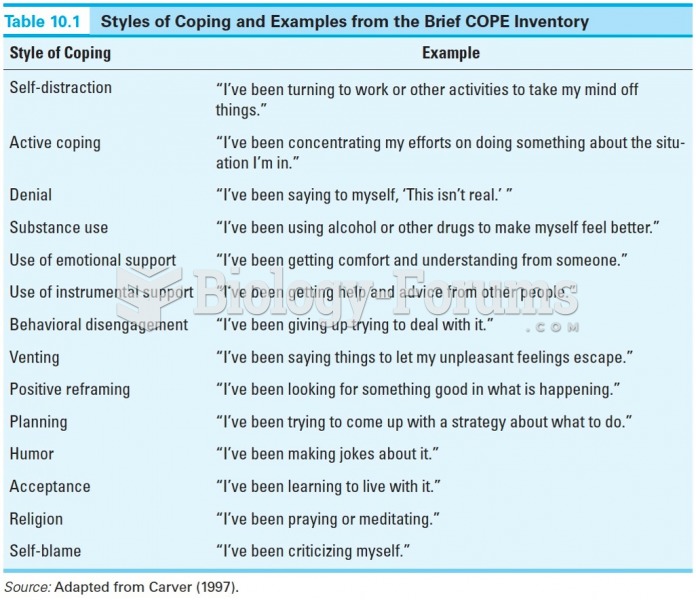Answer to Question 1
Answer: The authoritative child-rearing stylethe most successful approachinvolves high acceptance and involvement, adaptive control techniques, and appropriate autonomy granting. Authoritative parents are warm, attentive, and sensitive to their childs needs. They establish an enjoyable, emotionally fulfilling parentchild relationship that draws the child into close connection. At the same time, authoritative parents exercise firm, reasonable control. They insist on mature behavior, give reasons for their expectations, and use disciplinary encounters as teaching moments to promote the childs self-regulation. Finally, authoritative parents engage in gradual, appropriate autonomy granting, allowing the child to make decisions in areas where he is ready to do so. Throughout childhood and adolescence, authoritative parenting is linked to many aspects of competencean upbeat mood, self-control, task persistence, cooperativeness, high self-esteem, social and moral maturity, and favorable school performance. Longitudinal research indicates that among children of diverse temperaments, authoritative child rearing predicts maturity and adjustment into adolescence.
The authoritarian child-rearing style is low in acceptance and involvement, high in coercive control, and low in autonomy granting. Authoritarian parents appear cold and rejecting. To exert control, they yell, command, criticize, and threaten. They make decisions for their child and expect the child to accept their word unquestioningly. If the child resists, authoritarian parents resort to force and punishment. Children of authoritarian parents are more likely to be anxious, unhappy, and low in self-esteem and self-reliance. When frustrated, they tend to react with hostility and, like their parents, use force to get their way. Boys, especially, show high rates of anger and defiance. Although girls also engage in acting-out behavior, they are more likely to be dependent, lacking interest in exploration, and overwhelmed by challenging tasks. Children and adolescents exposed to the authoritarian style typically do poorly in school. However, because of their parents concern with control, they tend to achieve better and to commit fewer antisocial acts than peers with undemanding parents. In addition to unwarranted direct control, authoritarian parents engage in psychological control, in which they attempt to take advantage of childrens psychological needs by intruding on and manipulating their verbal expressions, individuality, and attachments to parents. Children subjected to psychological control exhibit adjustment problems involving both anxious, withdrawn behavior and defiance and aggressionespeciall y the relational form, which (like parental psychological control) damages relationships through manipulation and exclusion.
Page Ref: 282283
131. Discuss factors within the family that heighten the risk of child maltreatment.
Answer: Many interacting variablesat the family, community, and cultural levelscontribute to the risk of child maltreatment. The more risks present, the greater the likelihood of abuse or neglect. Within the family, children whose characteristics make them more challenging to rear are more likely to become targets of abuse. These include premature or very sick babies and children who are temperamentally difficult, are inattentive and overactive, or have other developmental problems. Child factors, however, only slightly increase the risk of abuse. Whether such children are maltreated largely depends on parents characteristics. Maltreating parents are less skillful than other parents in handling discipline confrontations. They also suffer from biased thinking about their child. For example, they often attribute their babys crying or their childs misdeeds to a stubborn or bad disposition, evaluate childrens transgressions as worse than they are, and feel powerless in parentingperspectiv es that lead them to move quickly toward physical force.
Most parents have enough self-control not to respond with abuse to their childs misbehavior or developmental problems. Other factors combine with these conditions to prompt an extreme response. Abusive parents react to stressful situations with high emotional arousal. And low income, low education (less than a high school diploma), unemployment, alcohol and drug use, marital conflict, overcrowded living conditions, frequent moves, and extreme household disorganization are common in abusive and neglectful homes. These conditions increase the chances that parents will be too overwhelmed to meet basic child-rearing responsibilities or will vent their frustrations by lashing out at their children.
Answer to Question 2
Answer: Because young childrens cognitive limitations lead them to assume that cultural practices determine gender, parents and teachers are wise to try to delay preschoolers exposure to gender-stereotyped messages. Adults can begin by limiting traditional gender roles in their own behavior and can provide children with nontraditional alternatives. For example, parents can take turns making dinner, bathing children, and driving the family car, and they can give their sons and daughters both trucks and dolls and both pink and blue clothing. Teachers can ensure that all children spend time in mixed-gender play activities and unstructured pursuits, as childrens behavior tends to be less gender-typed in these contexts. Finally, adults can avoid using language that conveys gender stereotypes and can shield children from media presentations that do so.
Once children notice the vast array of gender stereotypes in their society, adults can point out exceptions. For example, they can arrange for children to see men and women pursuing nontraditional careers and can explain that interests and skills, not sex, should determine a persons occupation. Research shows that such reasoning reduces childrens gender-biased views. By middle childhood, children who hold flexible beliefs about what boys and girls can do are more likely to notice instances of gender discrimination. And a rational approach to child rearing promotes healthy, adaptable functioning in many other areas as well.
 To examine a child’s ear, the pinna should be pulled back and up for children over 3 years; the pinn
To examine a child’s ear, the pinna should be pulled back and up for children over 3 years; the pinn
 Retrograde pyelogram. A contrast medium is injected into the ureter using a cystoscope, and the X-ra
Retrograde pyelogram. A contrast medium is injected into the ureter using a cystoscope, and the X-ra
 A Dorsal view of a scan of the hand phalange of a child from Denisova that yielded mtDNA that differ
A Dorsal view of a scan of the hand phalange of a child from Denisova that yielded mtDNA that differ




